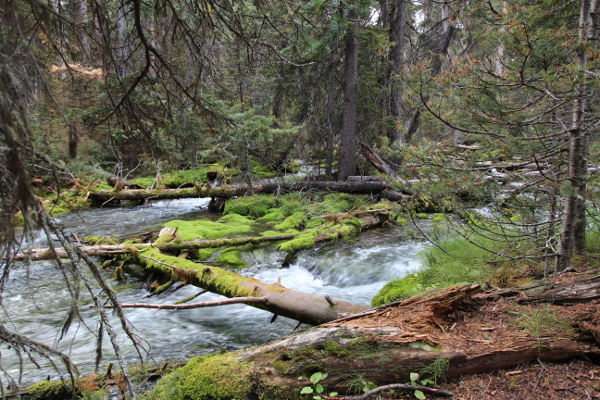A recent article written in The Guardian by scientist George Monbiot [1]discusses emergent research coming out of the United Kingdom that tells us rivers do not necessarily store the precipitation that falls in their catchments; but rather the majority of the precipitation is stored in the soils of their floodplains This scientific finding directly questions the value of traditional flood mitigation measures, such as canalizing and dredging rivers, techniques that are now known to increase flow rates to downstream communities.
Some scientists are now pushing for the implementation of softer engineered solutions, such as the rewilding of our rivers. Rewilding rivers, among other elements, requires the redesigning of curves and snags back into the river system along with connecting rivers to uninhabited land designated for flooding. The likelihood for downstream flooding can be greatly reduced by creating a catchment for sediment and rock, ultimately reducing the energy and speed of the river.
 |
| “Karst springs Kananaskis country Alberta Canada” by Thank you for visiting my page is licenced under CC BY 2.0. |
Rewilding our rivers differs from traditional mega infrastructure solutions, as it calls for a multi-functional approach requiring: the rebuilding of soils (by encouraging practices that rebuild organic matter through the sequestration of carbon and storage of nitrogen and phosphorus); the restoration of riparian areas and wetlands; the restoration of floodplains woody vegetated root structures through innovative farming practices such as agroforestry; and the most controversial, the relocation of preexisting development out of the floodplain.
Over the next four weeks the Bog will take an in-depth look at the above four components for rewilding rivers. Each segment will be featured starting next Tuesday with the rebuilding of our soils and looking at the advantages this mitigation option could offer our watersheds.
The Government of Alberta has committed to taking a watershed wide approach that considers all options. Three proposed hard infrastructure options are currently being assessed for feasibility and have received extensive news coverage. We want to add to the conversation by talking about natural flood mitigation options. As Albertans it is important for us to have a mindful conversation about how we want to manage our watershed for future generations. Join us in a conversation over the next month that will take an in-depth look into natural flood mitigation options. We look forward to your feedback.
Lauren Eden is a Researcher at Alberta WaterSMART
Part 1: Rewilding Our Rivers: The Ecological Argument For Healthy Soils And Their Role In Flood Mitigation
Part 2: Rewilding Our Rivers: Wetlands – Nature’s Kidneys
Part 3: Rewilding Our Rivers: The Riparian Edge
Part 4: The Floodplain – The River’s Room to Breathe
Part 5: A Recipe For Greater Resiliency
[1] Monbiot, G. (2014, January 13). Drowning in money: the untold story of the crazy public spending that makes flooding inevitable. The Guardian. Retrieved from www.theguardian.com
